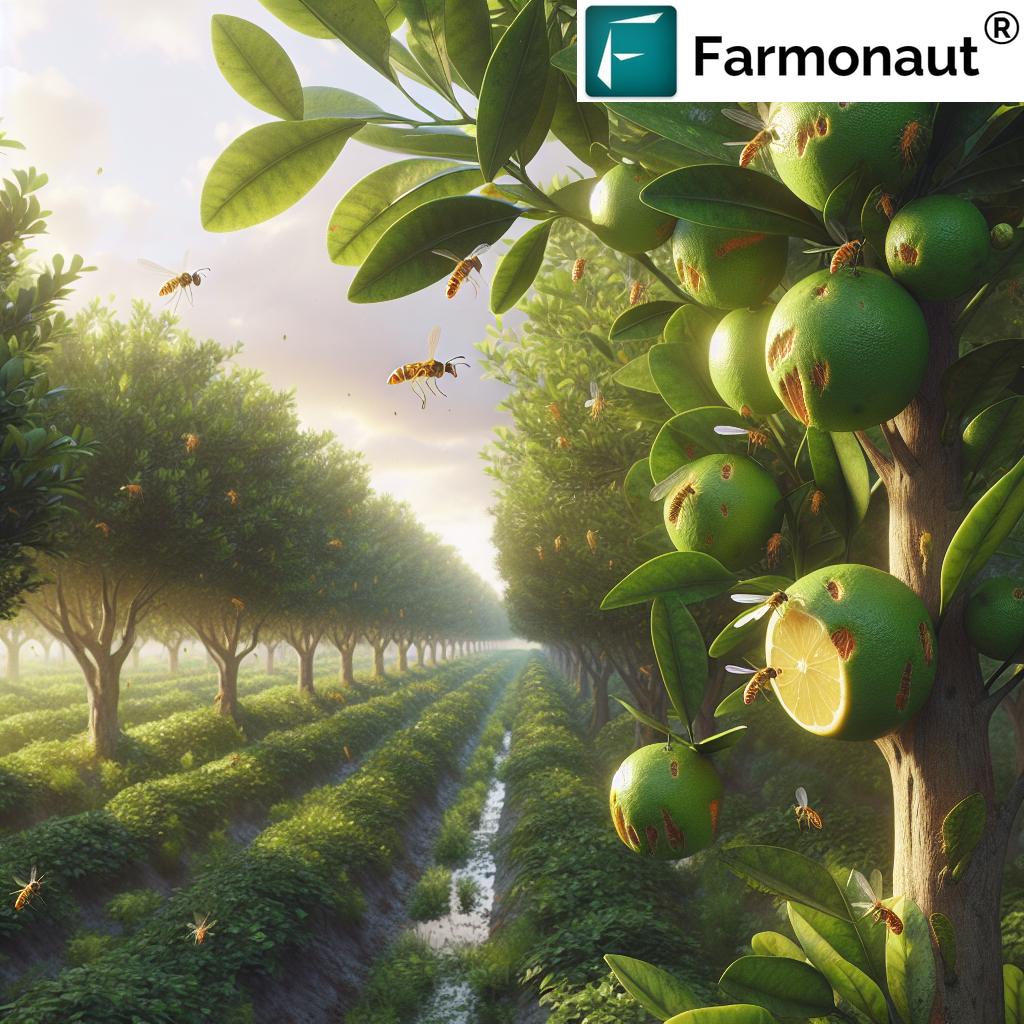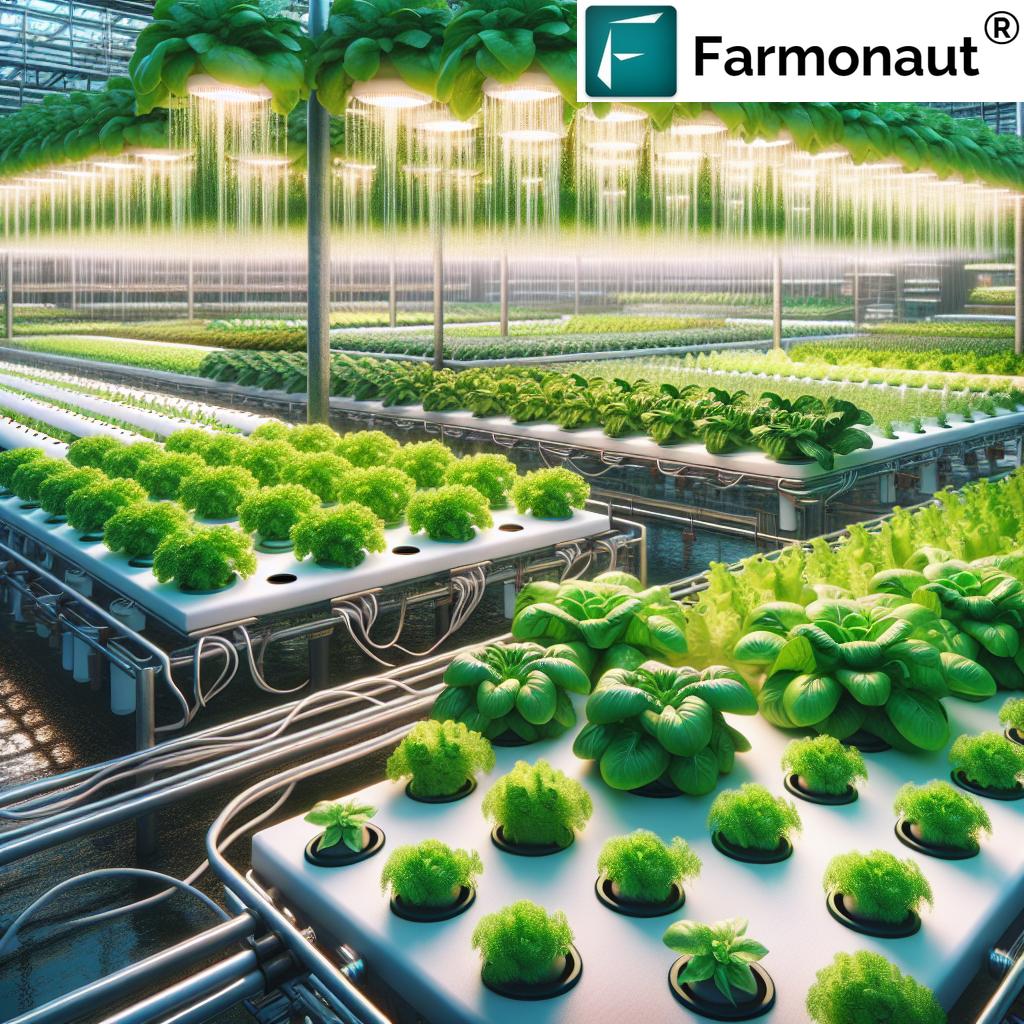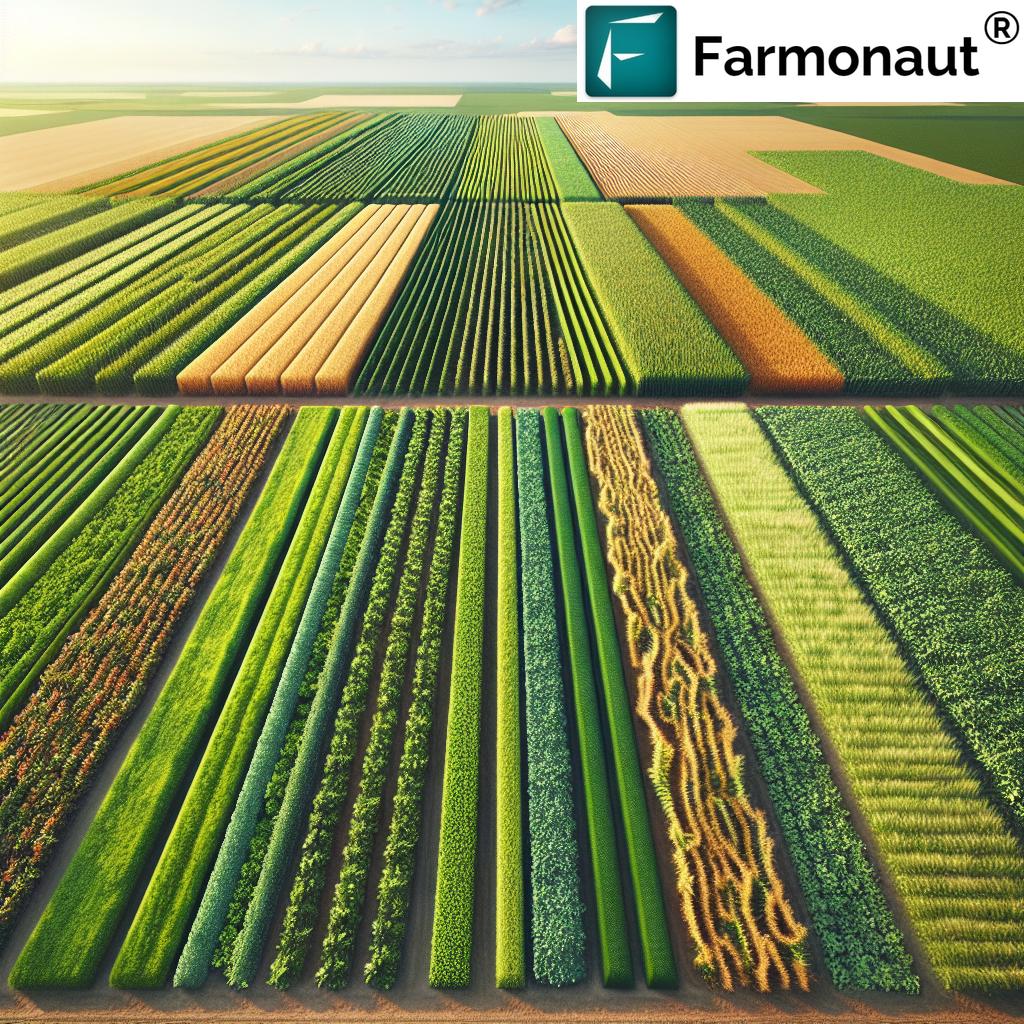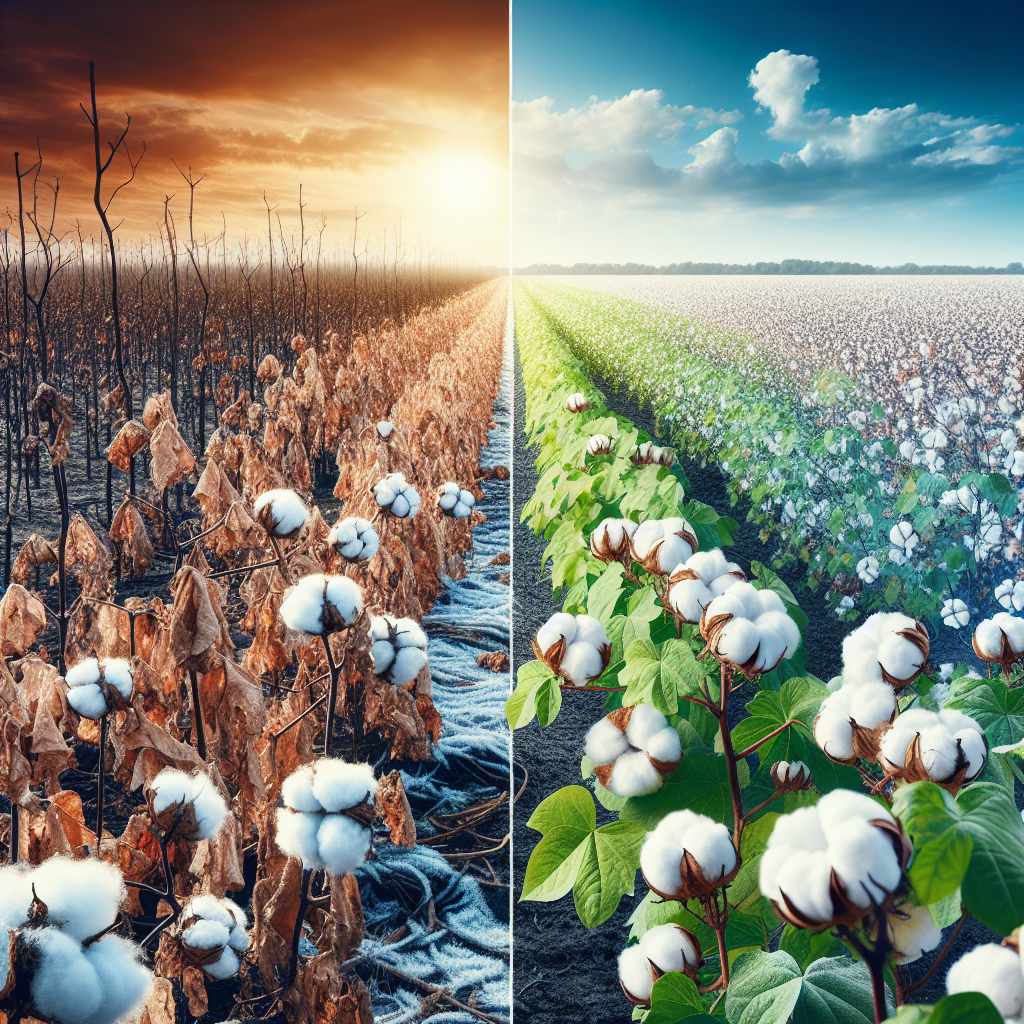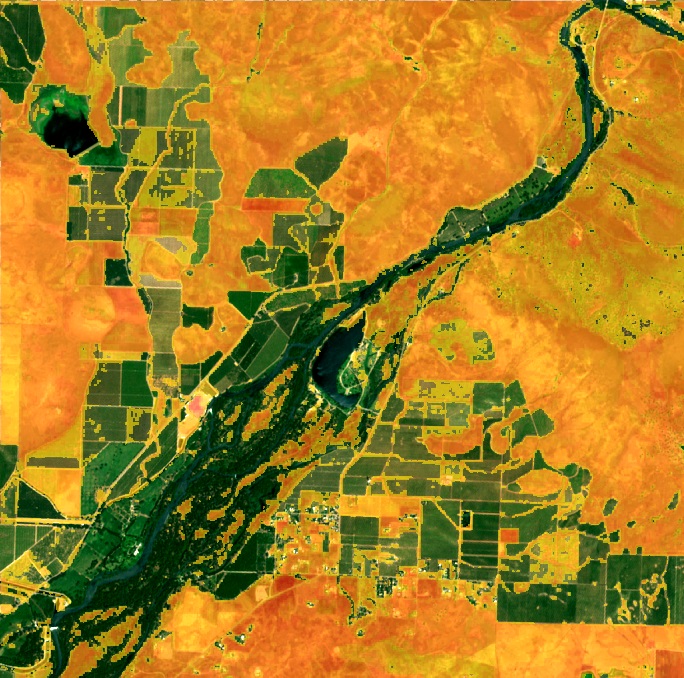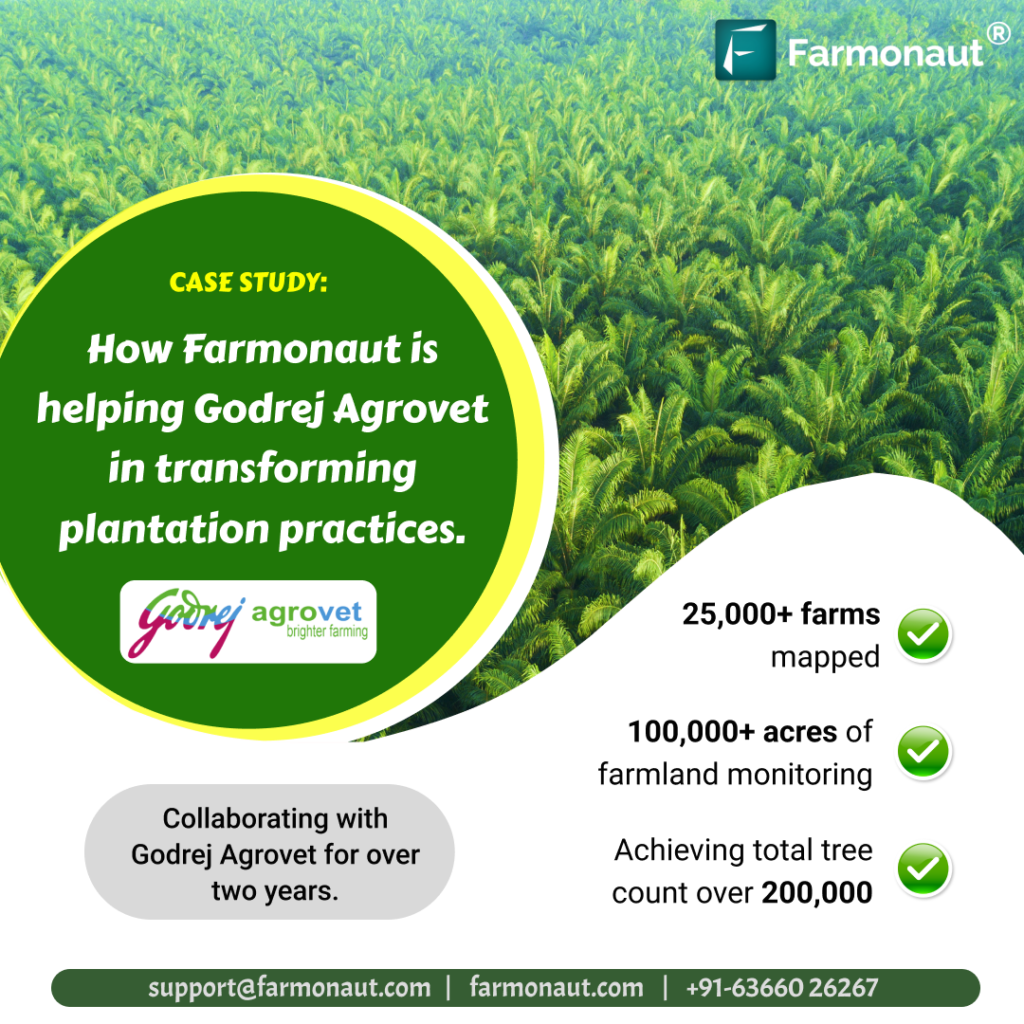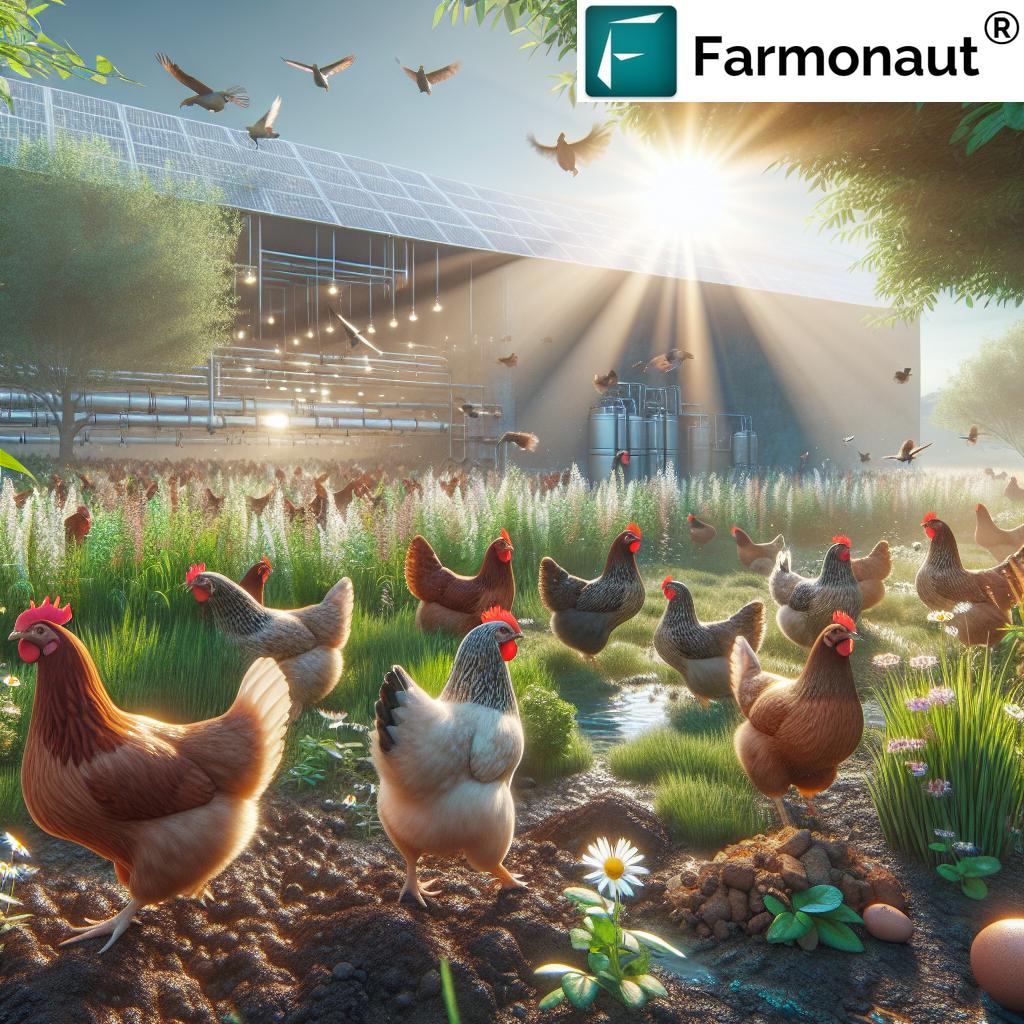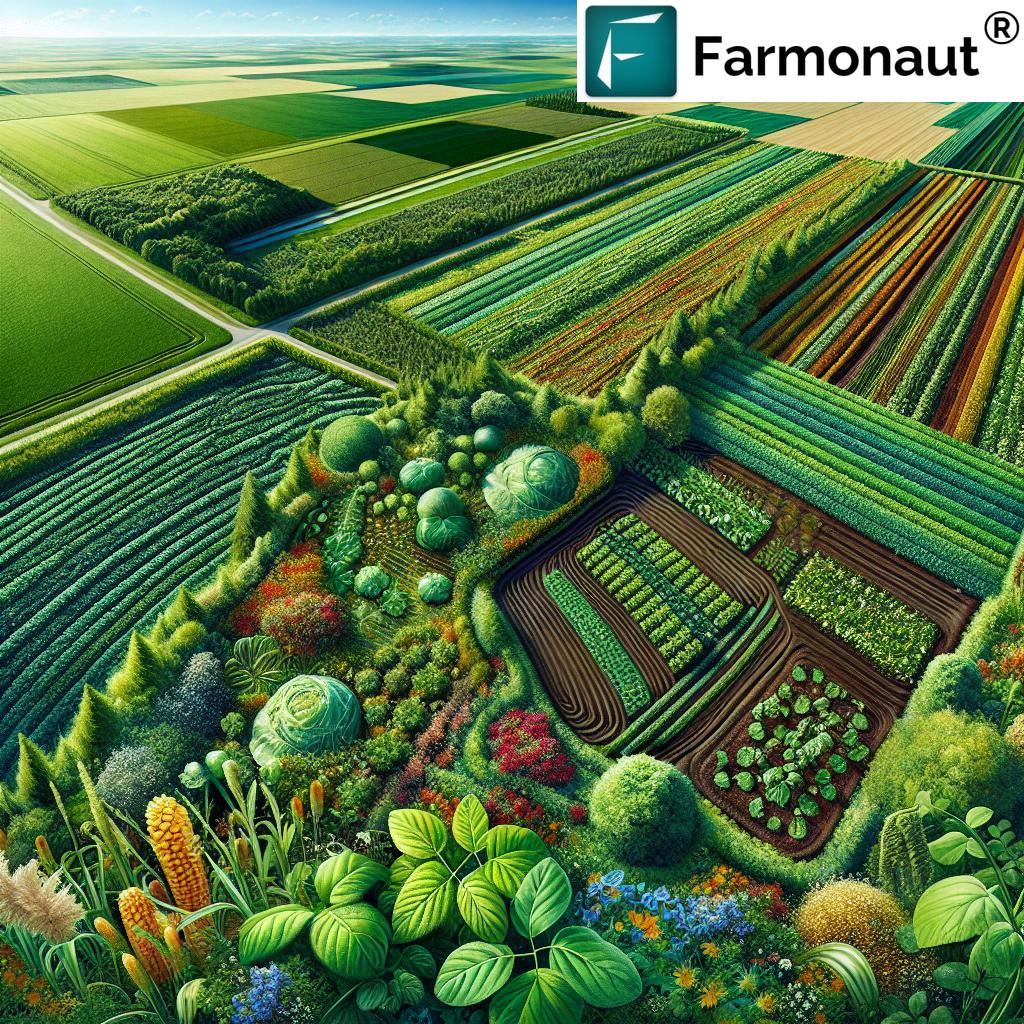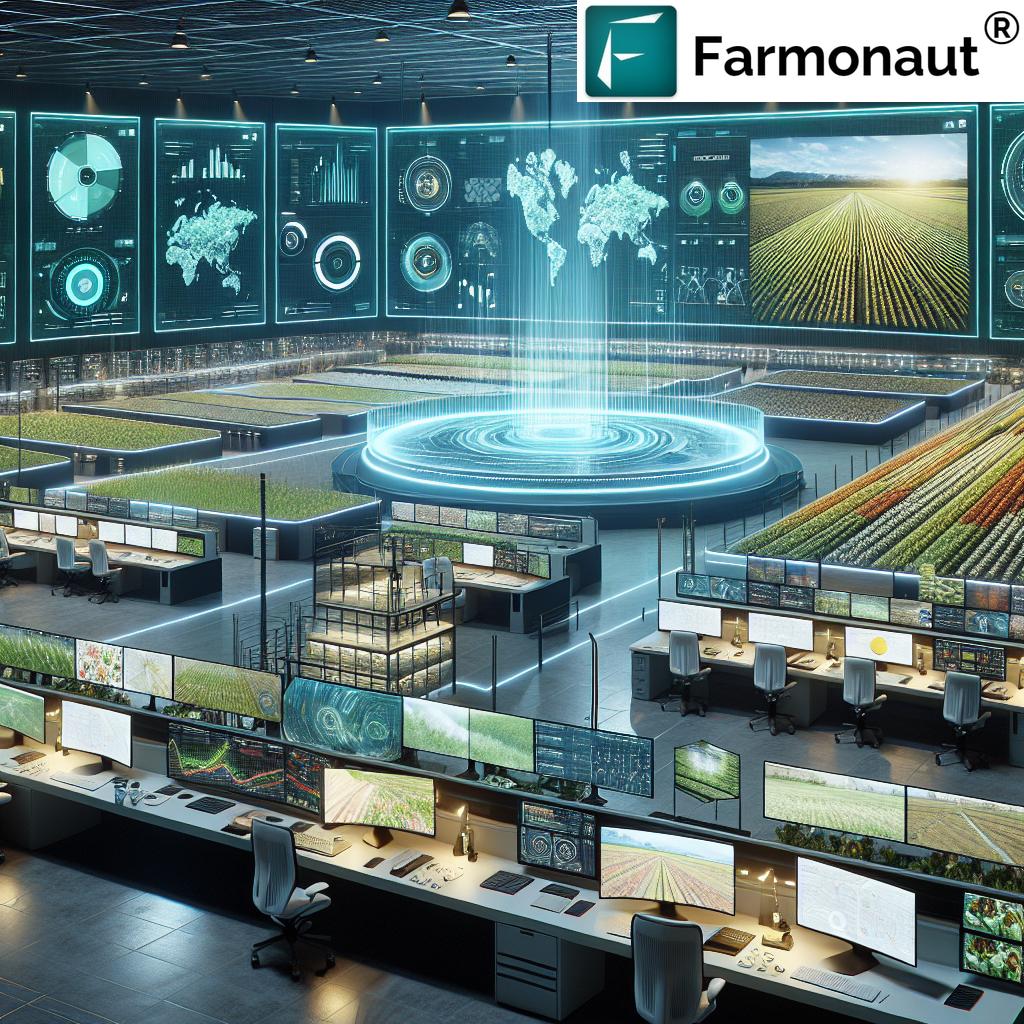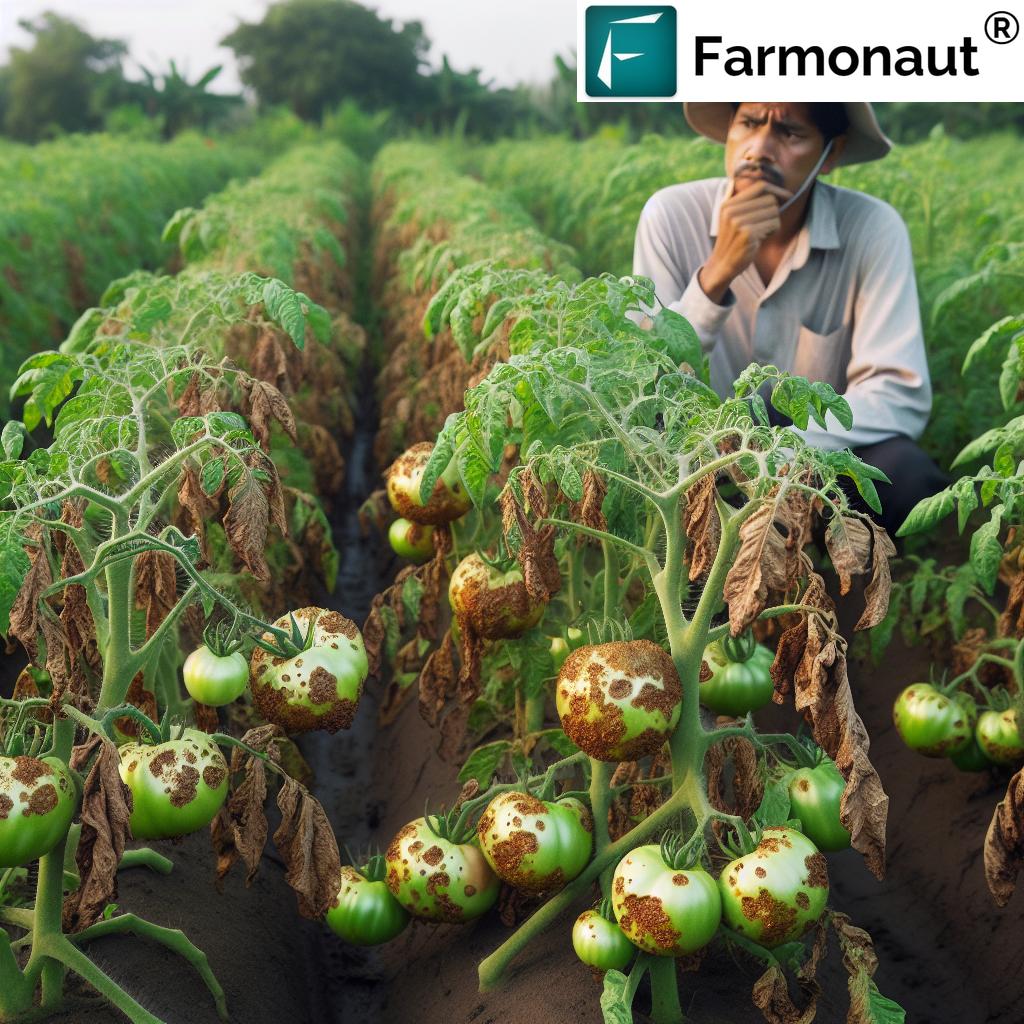General Crop Farming Market: 2025 Innovations & Trends
Table of Contents
- Introduction: The Future of Crop Farming in 2025
- Crop Farming Trivia 2025
- Current State of the General Crop Farming Market
- 🚀 2025 Innovation & Technology Trends in Crop Farming
- Innovations Impact Comparison Table
- Cultivating Sustainability: Environmental Practices Transforming Crop Farming
- Sustainable Practice Trivia 2025
- Facing the Challenges: Navigating the General Crop Farming Landscape in 2025
- The Role of Policy and Market Access in General Crop Farming
- The Farmonaut Edge: Satellite-Driven Insights for the General Crop Farming Market
- Farmonaut Product Links
- Affordable Access to Satellite Data: Farmonaut Subscriptions
- FAQ: General Crop Farming Market 2025
- Conclusion: Embracing Progress for the Future of Crop Farming
Introduction: The Future of Crop Farming in 2025
The general crop farming market in 2025 stands at a pivotal crossroads, undergoing significant transformation driven by technological advancements, sustainability imperatives, evolving market demands, and generational shifts in farming crop practices. Navigating the current landscape of crop in farming is increasingly complex as we confront climate change, shifting trade patterns, unpredictable weather, and fluctuating commodity prices. Understanding these dynamics is crucial for the next phase of agricultural growth and ensures the resilience, productivity, and security of our global food supply. This guide explores how modern technology and responsible practices are reshaping the sector, and what lies ahead for our generation farmers market.
“By 2025, over 60% of crop farms will adopt AI-powered precision agriculture tools for optimized resource use.”
Current State of the General Crop Farming Market
The general crop farming market remains the backbone of global food security. Key crops such as wheat, corn, rice, and soybeans continue to supply essential grains, vegetables, and staples to growing populations. The sector is shaped by multiple factors:
- International trade policies: Impact export/import flows and influence commodity prices.
- Market volatility: Fluctuating prices result from changing dietary patterns and supply chain complexities.
- Environmental pressures: Farmers face erratic weather, pest outbreaks, and soil degradation tied to climate change.
Yet, despite these challenges, the outlook for the general crop farming sector remains robust. The need to support food security, coupled with a global focus on sustainability, continues to drive innovation and integration of new practices.
🚀 2025 Innovation & Technology Trends in Crop Farming
One of the most critical changes to the general crop farming market in 2025 is the adoption of technological advancements and modern agriculture techniques. These developments drive greater efficiency, yields, and sustainability–key for food production in an increasingly unpredictable world.
- Precision Agriculture: Using drones, satellite imagery, and sensors to monitor and optimize crop health, water use, and inputs such as fertilizers and pesticides.
- Advanced Biotechnology: New crop varieties that are more resilient to drought and pests, ensuring crops can thrive despite climate and environmental challenges.
- Digital Platforms: Access to real-time market and weather information, direct connection with buyers, and use of mobile financial services for informed decision-making.
- Resource Management Tools: Real-time tracking of soil health, carbon footprinting, and fleet management for efficient farm operations.
- Blockchain-Based Traceability: Enhanced transparency throughout the supply chain, vital for food safety and consumer trust.
With these trends, the general crop farming market is leveraging technology not only to react to emerging challenges but also to help farmers proactively manage resources and respond to market and environmental signals with agility.
Explore how precision tech and AI are boosting harvests and sustainability in 2025.
Key Technologies Shaping the General Crop Farming Market
- Satellite-Based Monitoring: Modern satellite imagery tracks crop health, soil conditions, and even carbon emissions, allowing for accurate and timely agricultural decisions. Farmonaut’s [carbon footprinting tools] give farmers actionable insights into emissions and resource management.
- AI-Driven Analytics: Artificial intelligence processes vast data sets (e.g., weather, soil metrics, pest incidence) to recommend optimal planting, irrigation, and nutrient application times. This level of integration is a game-changer for the general crop farming sector.
- Blockchain for Transparency: Blockchain technology now ensures full traceability for each farming crop, enabling secure documentation of every stage in a product’s journey—from field to table. Discover more about [Farmonaut’s blockchain-powered traceability] and how it supports supply chain integrity.
- Mobile and Web Apps: Producers utilize digital platforms, like the Farmonaut app, to manage farm operations, access financial data, and interact with markets seamlessly across Android, iOS, and browsers.
Experience our platform for real-time monitoring, field analytics, and resource management – your 2025 competitive edge in the general crop farming market.
Learn how satellite-based crop monitoring revolutionizes modern crop in farming management.
The Rise of AI, Drones, and Sensor Integration
The integration of AI, drones, and sensors into the general crop farming market has led to:
- Proactive monitoring and detection of plant stress, nutrient deficiencies, and pest outbreaks, minimizing losses and maximizing yields.
- Optimizing inputs—applying the right amount of water, fertilizer, or pesticide—based on precise real-time field data, reducing costs and environmental impact.
- Automating field operations with drones for seeding, spraying, and surveying, improving labor efficiency and scalability—key in areas with workforce shortages.
See how AI drones transform farm efficiency, savings, and outcomes.
Innovations Impact Comparison Table: General Crop Farming Market 2025
| Innovation / Technology | Estimated Adoption (%) in 2025 | Expected Increase in Yield (%) | Projected Reduction in Input Costs (%) | Estimated Environmental Impact | Key Challenge Addressed |
|---|---|---|---|---|---|
| AI-based Sensors & Analytics | 62% | 17% | 21% | High (Resource Optimization; Index = 8/10) | Resource Waste, Real-Time Crop Health |
| Drone Monitoring and Spraying | 48% | 10% | 19% | Moderate-High (Reduced Chemical Drift; 7/10) | Labor Shortages, Timely Input Application |
| Precision Irrigation Systems | 43% | 12% | 21% | High (Conserves Water; 9/10) | Water Scarcity, Climate Unpredictability |
| Blockchain-Based Traceability | 25% | 5% | 10% | High (Transparency, Lower Fraud; 8/10) | Supply Chain Authenticity, Food Safety |
| Satellite-Based Crop Health Monitoring | 38% | 13% | 15% | High (Enables Precision Farming; 8/10) | Pest/Disease Identification, Drought Risk |
| Renewable Energy Powered Irrigation | 28% | 7% | 16% | Very High (Reduces Emissions; 9/10) | Emissions Reduction |
| AI Weather Prediction/Advisory Systems | 41% | 9% | 10% | Moderate (Reduces Weather Vulnerability; 7/10) | Weather Volatility, Yield Stability |
This table underscores how diverse technological innovations are influencing the general crop farming market in 2025, driving improvements in yield, sustainability, and market security.
Discover the future of farming with satellite, AI, and geotagging innovations.
Cultivating Sustainability: Environmental Practices Transforming Crop Farming
Every major actor within the general crop farming market recognizes sustainability as a critical imperative for food security in 2025 and beyond. Environmental and market demands are causing a fundamental shift in practices and business models:
- Consumer influence: More buyers demand crops produced with reduced chemical use and supportive of biodiversity.
- Policy evolution: Governments tighten regulations on greenhouse gas emissions and promote river and soil health through sustainable development.
- Resource conservation: Prioritizing practices like crop rotation, cover cropping, reduced tillage, and adoption of renewable energy (e.g., solar-powered irrigation in locations like Malawi, see video below).
Example: Malawi leverages solar-pump irrigation to enhance crop yields and sustainability.
Smart Inputs and Eco-Friendly Practices in the General Crop Farming Market
In the 2025 general crop farming market, input reduction and efficiency play a major role in sustainability:
- Low-input crops: Next-gen grains and pulses bred to thrive with fewer fertilizers and less water.
- Biological crop protection: Increased use of beneficial microbes and natural predators over chemical pesticides, promoting crop and soil health.
- Zero-waste fertilizers: Sustainable solutions like Canada’s green ammonia revolution are reducing environmental impact.
- Carbon tracking and reporting tools: Platforms, like ours at Farmonaut, enable farmers to track, quantify, and report their carbon footprint, supporting participation in new carbon markets.
Canada’s fertilizer innovations are shaping eco-friendly input trends worldwide.
“Sustainable farming practices are projected to reduce chemical fertilizer usage by 30% in the general crop market by 2025.”
Facing the Challenges: Navigating the General Crop Farming Landscape in 2025
As innovation accelerates, so too do the challenges for farmers and market participants. Understanding and preparing for these obstacles is critical for sustaining productivity and ensuring economic viability as we progress deeper into the future.
- Climate Change: Erratic weather, drought, and extreme heat impact yields and cause frequent crop failures.
- Pest and Disease Outbreaks: New patterns of pest outbreaks require dynamic monitoring and rapid response capabilities.
- Supply Chain Disruptions: Global events can interrupt logistics, impacting farmgate prices and food security.
- Aging Farmer Population: The need to attract the next generation of farmers through training, access to technology, and financial support is urgent.
- Market Volatility: Fluctuations in commodity prices require better risk management tools, including insurance and hedging instruments (see below for Farmonaut-supported insurance solutions).
The Role of Policy and Market Access in General Crop Farming
Policies and access to markets are pivotal in shaping the 2025 general crop farming landscape. Effective government and private sector initiatives drive infrastructure development, enable financial services, and support digital integration. Specific strategies include:
- Enhanced rural infrastructure: Upgrading roads, storage facilities, and broadband ensures efficient movement of crops and minimizes post-harvest losses.
- Better financial products: Customized loans and insurance (learn about Farmonaut’s satellite-powered loan & insurance verification) reduce risks and help farmers invest in technology.
- Increased research funding: Driving resilience and high-yield varieties through R&D grants, supporting system-wide change.
- Trade facilitation: Simplifying regulation and reducing export barriers to better connect farmers with buyers around the globe.
Explore regenerative agriculture approaches supporting climate and soil health solutions in 2025.
Witness the next level of farm intelligence with AI satellite insights driving decision-making.
The Farmonaut Edge: Satellite-Driven Insights for the General Crop Farming Market
As a leader in satellite technology, we at Farmonaut provide tailored solutions designed to address the foremost needs of the general crop farming market in 2025. Our platform supports farmers, businesses, and governments with:
- Real-time monitoring: Using multispectral satellite imagery to analyze vegetation health (NDVI, LAI), detect crop stress, and monitor soil conditions for proactive decisions.
- AI-powered advisory: The Jeevn AI system provides live tips on weather, pest pressures, and input optimization.
- Blockchain-based traceability: Our systems track the journey of each farming crop From field to market, ensuring transparency and trust at every stage.
- Fleet & Resource Management: Efficiently manage farm machinery and resources for cost-effective and sustainable farm operations.
- Environmental compliance: Generate verified carbon footprint reports to participate in international carbon markets and demonstrate environmental stewardship.
- Accessible APIs: Easy [API] integration and [developer docs] for custom software solutions and integrations.
These offerings are helping the general crop farming market to adapt rapidly to 2025’s changing landscape—enhancing yield, sustainability, and competitive advantage.
Farmonaut Product Links
-
Carbon Footprinting
Farmonaut enables estimation and management of your farm’s carbon footprint for sustainable certifications and market access. -
Product Traceability
Track your crops across every stage using blockchain—enhance food safety, transparency, and consumer trust in your products. -
Crop Loan & Insurance
Use satellite-powered assessments for faster, more transparent agri-loans and risk-reducing insurance. -
Fleet Management
Streamline and monitor agricultural vehicles and equipment for lower costs and improved safety. -
Large Scale Farm Management
Access a unified dashboard for multi-location and enterprise farm operations with seamless scalability. -
Crop Plantation, Forest Advisory
Get real-time advisory for plantation management and forestry projects.
Affordable Access to Satellite Data: Farmonaut Subscriptions
Our mission is to make cutting-edge satellite and AI tools for the general crop farming market accessible to everyone—smallholders, enterprises, and governments alike. Choose a subscription plan that fits your operational needs. Scalable and affordable, you can start small and grow as your needs evolve.
FAQ: General Crop Farming Market 2025
What are the top technologies in the general crop farming market for 2025?
The leading technologies are AI-powered sensors and analytics, drone-based monitoring, precision irrigation, blockchain-based traceability, and satellite imagery for real-time crop and soil health monitoring.
How is sustainability affecting farming practices?
Sustainability is now a market and regulatory requirement. Farmers are adopting crop rotation, cover cropping, reduced tillage, solar-powered irrigation, and advanced input management to reduce environmental impact and chemical usage.
How can farmers manage climate change and unpredictable weather?
By integrating satellite monitoring, AI weather forecasting, crop diversity, and resource-efficient practices, farmers gain resilience against erratic climate patterns and safeguard yields.
What role do policies and government actions play in the general crop farming market?
Strong policies provide infrastructure investment, R&D funding, and financial products such as insurance, making the sector more robust against market and climate volatility.
How does Farmonaut support the general crop farming sector?
We deliver affordable access to satellite-based analytics, AI-driven farm advisory, and blockchain-enabled traceability, ensuring efficiency, transparency, and sustainability for diverse farm operations.
Where can developers find the API documentation?
Visit our API developer documentation for guidance and integration instructions.
Conclusion: Embracing Progress for the Future of Crop Farming
In 2025, the general crop farming market stands transformed by innovation, technological integration, and an enhanced focus on sustainability. The balance between boosting yields and protecting natural resources is at the heart of modern crop farming. By embracing advanced technologies and new practices—from AI and satellite analytics to blockchain for supply chain integrity—farmers and stakeholders foster a resilient, secure food system.
Continuous adaptation and a commitment to learning, together with accessible, affordable tools like those offered by Farmonaut, ensure that the sector remains competitive and capable of feeding growing populations while safeguarding the planet for generations to come. The future of the general crop farming market is promising—the time to innovate, connect, and lead the change is now!





